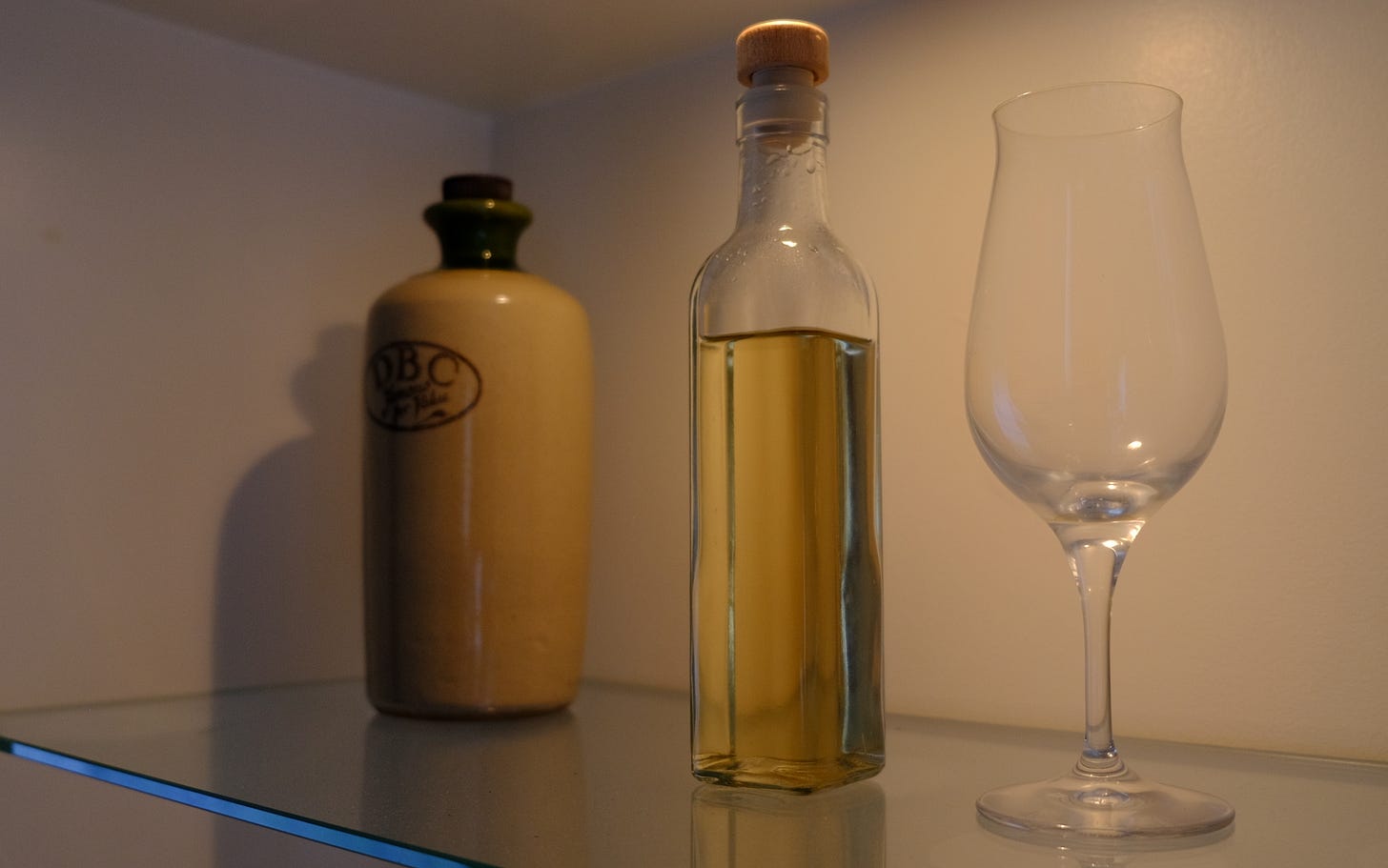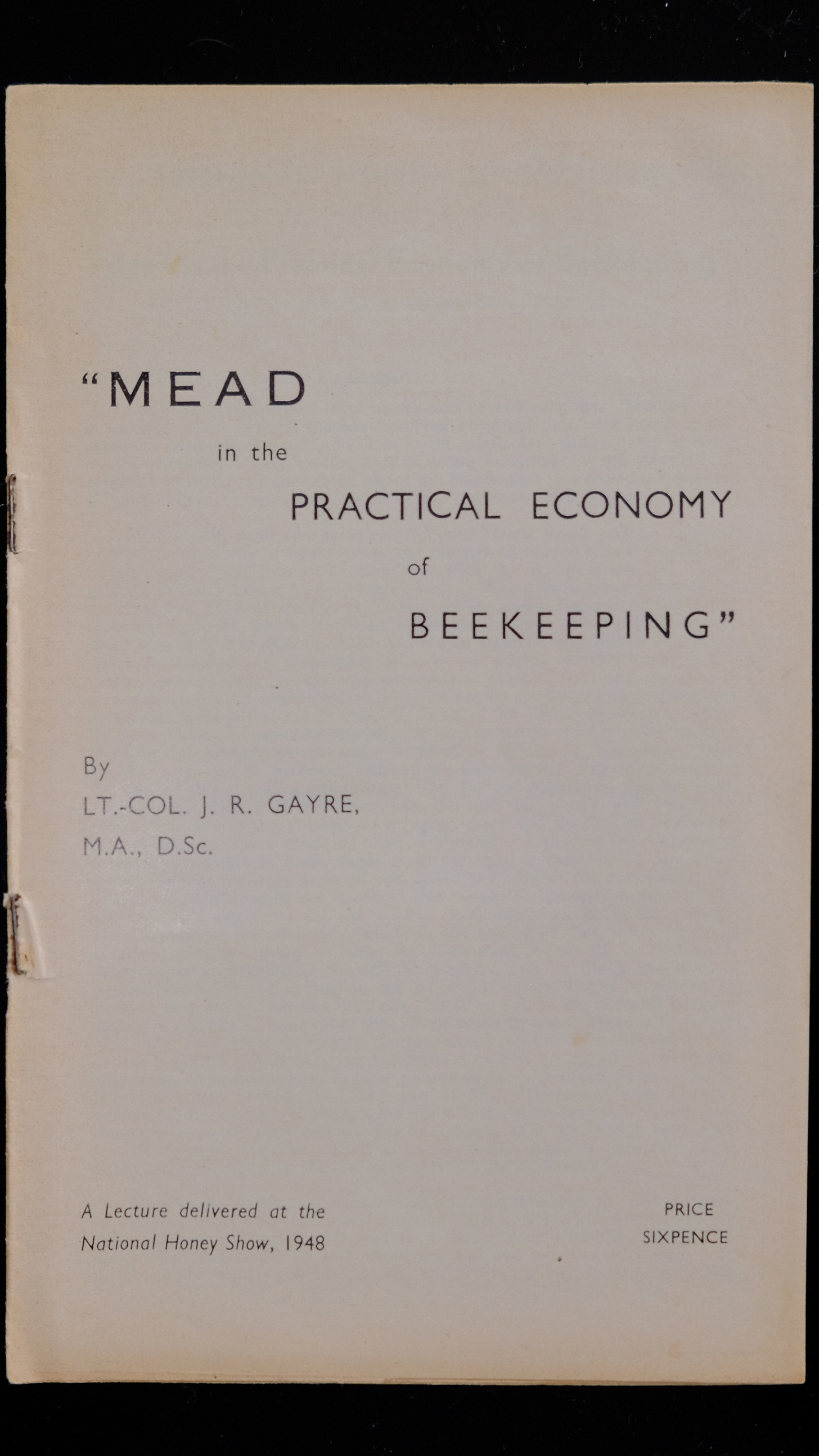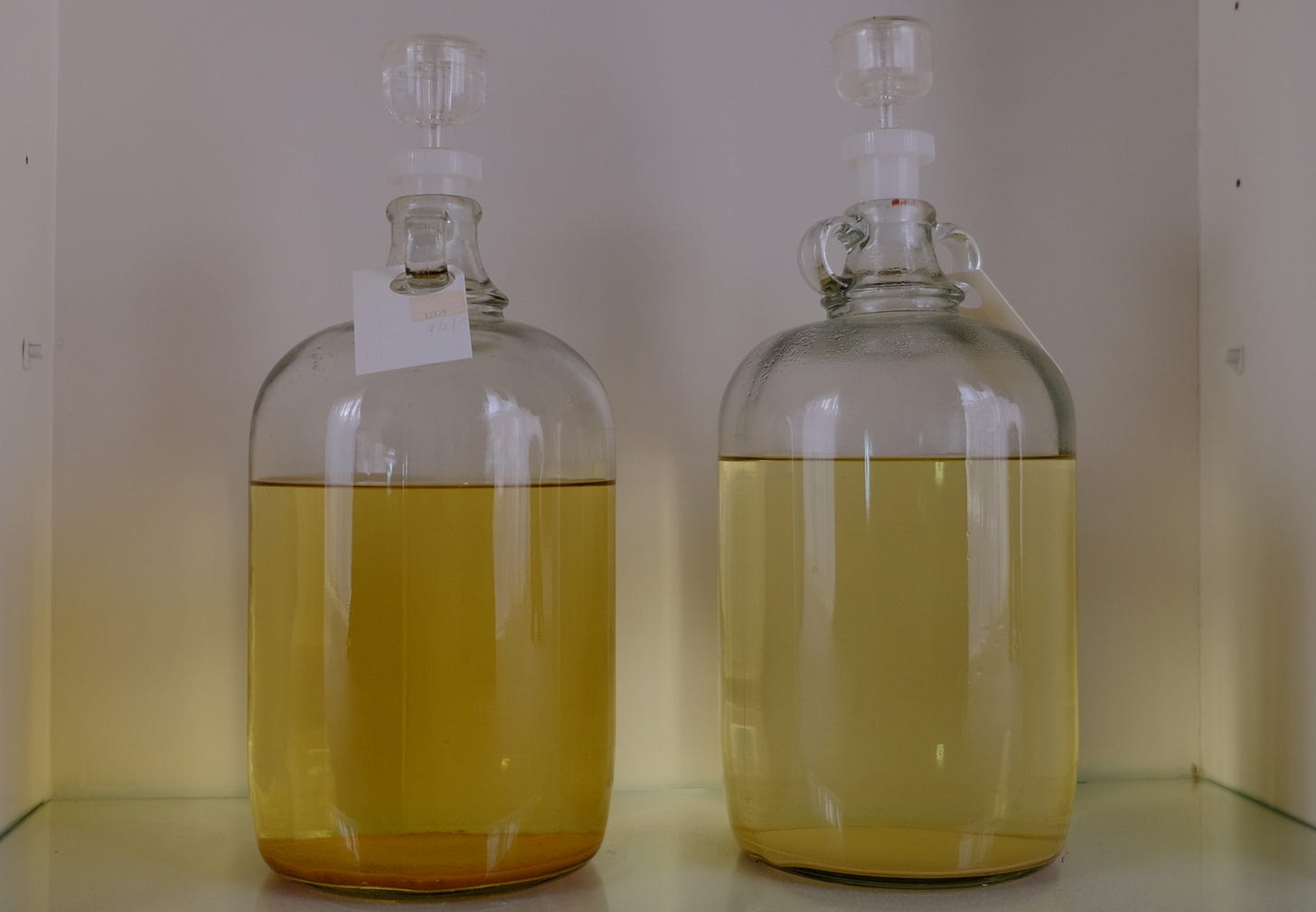Sometimes. Only some yeasts survive in sugary liquids and bees are quite likely to collect them in nectars and honeydews, but they are there anyway. Neolithic Man was already purposely growing grapes and cereals for producing naturally fermented drinks, which were common in the ancient world, 8000 years ago. Deliberately introducing yeasts and managing fermentation seems unknown before 14th century,1 even if, at the time we did it without knowing what ‘yeasts’ were.
The role of honey in these drinks wasn’t always very obvious, it was often added as a sweeter to other fermented preparations. Drinks with all kinds fruit, cereals, honey, and flavouring herbs and spices were popular, especially where it was too difficult or too expensive or too sparsely populated to sustain a large expanse of vines or grain. Alcoholic drinks weren’t appreciated across the globe, but in specific regions (such as Europe) a sweetened alcohol was irresistible whether honey was the base ingredient or an adjunct.
Brewing as we knew it
The methods making these ‘meads’ seemed simple, but there was a library full of folk knowledge whispered down the years, some lost in translation, and some just missed by antiquarians and scholars unable to seek or recognise details that matter. We’re told early mead recipes, for example, used honey and rainwater in about a 1:3 ratio kept in the sun for 40 days starting from a special day. One recommended crushing a whole skep of bees and pouring the mush into water. Another boiled the honey, added it to water, and threw in a handful of straw, or soaked the crushed combs in water until an egg would float on the surface. The water was invariably rainwater or spring water, just unpolluted water in other words.
Specialist yeasts may not have been added, but by systematising production through sheer trial and error, knowing their crop (heather honey is not blackberry honey), reusing the same wooden barrels, boiling fruit mixtures separately, keeping constant sugar and alcohol concentrations, only fermenting ‘at the Rising of the Dog Star’ and using other lost local rituals and traditions, mead preparation gradually accommodated, preserved, and selected for yeasts that became, in some sense, reasonably predictable and consistent. Much more reliable than the recipe alone would suggest.
In contrast to the manufacture of wine and beer drinks, the mead drinker inhabited a very different world, one that began to disappear in the 18th century. Long disparaged as inferior by wealthy urban populations, mead was agrarian, highly local, small scale, invariably much less commercial, and rooted in the folklore of tiny communities. It couldn’t easily be taxed and regulated, and for beekeepers at least, no more than a quarter of the cost of a wine of equivalent strength. Right up until the ‘60s, making and sharing mead was a normal part of the practical economy of beekeeping, a thrifty and intensely personal way of making the most of a hard won prize, and using honey almost but not quite too difficult to recover.
So, sure, mead might make itself. Floral nectars are full of yeasts and bacteria. If there is too much water in your honey (in which case the law doesn’t allow you call it honey); if the acidity is out of range, or if the microbiological counts are high enough to make your water content borderline, it will start to make itself, despite your best efforts. What you are likely to end up with however, is a smelly and sulphurous, slightly fizzy, alcoholic vinegar which isn’t going to keep, and might just explode. We can do better.
Brewing as we know it
Once there were as many mead recipes as there were villages. With a little bit of knowledge we can sort the sensible methods from the nonsense. We don’t have to rely on a microflora ‘mother’ lying dormant in the leftovers from last year’s sherry barrel. Modern mead makers have been educated by wine/beer making and benefit from technical expertise acquired by the more commercial and popular products. We can think about the ingredients and equipment we have and use them to reliably craft a style of drink that suits our taste. Honey and water is a simple drink, but it isn’t very nutritious, for you or the yeast.
Nowadays there are hundreds of yeast strains that have been developed from natural strains, each acclimatised to a particular range of environment conditions, with biological processes that suit the production of particular compounds, and with specific nutritional demands. Honey is a substrate composed of different sugars, mostly deficient in any amino acids (so, in nitrogen), and deficient or highly variable in minerals like calcium, magnesium, potassium, phosphorus and zinc. What’s more, the properties of the honey are changing as fermentation happens, for example, a predominately glucose substrate becomes predominately fructose one.
Yeast strains tend to prefer glucose to fructose sugars, vary in alcohol tolerance (from a maximum of around 12% v/v to a maximum of 18.5%), and suit different temperature ranges (somewhere between 10OC to 35OC). They are also competitive and secrete toxins (sometimes known as the ‘kill factor’) that are selectively lethal to other strains, Some strains can co-exist, some can’t.
Since the 19th century, as well as better yeast strains, the other matter we have improved is cleanliness, our ability to keep micro-organisms that might change, or even spoil, the drink away. We can start with practically sterile equipment, and for a while even the honey musts and fruit mixtures were sterilised by boiling them before the fermenting yeast was added. We are more inclined to avoid heating honey solutions now as it destroys the floral odours and proteins we’d rather keep, but we can use sulphites to remove bacteria that can turn our alcohol into vinegar.
Better control over yeast strains and yeast nutrition is designed to nurture an environment that favours our yeast for as long as we need it, outcompeting organisms that might harm the brew. Smart mead makers can make mead in stages, timing the growth and development of the various micro-organisms present to ensure they are not feeding ones they don’t want. This particularly important for meads with fruit and herbs, additions which are a certainly a source of active microflora that might still be there after your yeast has gone dormant.
Besides the improvement in ingredients our equipment is much better. Ceramics and wood are not just full of character, they’re full of all sorts of things. At least plastic, glass, and steel can be kept clean and free of stubborn bio-films. The hydrometer is a much more practical instrument than an egg. By measuring the density of the sugar solution we have a consistent measure of the progress of fermentation, where we are starting, and when we have reached the end. By knowing where we are and where we aim to go we can also set up and maintain the conditions we need along the way, or change the conditions to suit where we want to be. A thermometer can be handy.
The ultimate ‘slow food’?
After spending the last half century in the doldrums (some would say, the last 400 years) mead is having a bit of a resurgence, just a little bit counter-cultural. A little bit nostalgic; a little bit romantic. Its communal-but-independent, frugal roots are back in fashion, it seems, but maybe that’s where style trumps substance.
Treading the line between mead’s mythology and the reality of commerce will be tricky and I doubt if mead-making will ever truly scale, it will always modestly be a bit ‘cottage’. I’m guessing the greatest barrier to its revival for beekeepers is the one thing we now seem to lack most, patience. Are you in a hurry to get extraction clean up done? Do you have the same ‘one-pot formula’ mentality I fight? Are you looking forward to tasting a successful brew...in two years?
Maybe someone else should make the mead, I haven’t got time.
Crane, Eva, The World History of Beekeeping and Honey Hunting (1999) Routledge, ISBN 0-415-92467-7






